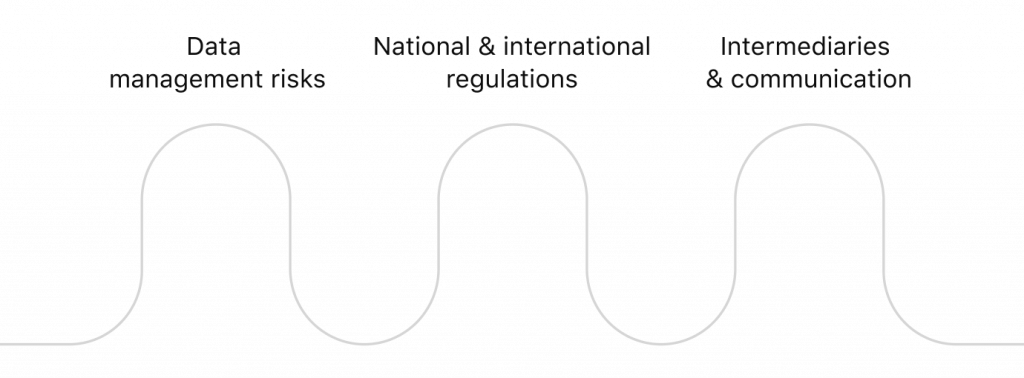As emerging fintechs continue to expand in the market, more than doubling in the last 3 years alone, traditional brick-and-mortar banks are forced to evolve faster than anticipated. This drive toward innovation was further accelerated when the coronavirus pandemic hit in early 2020. Consumers expected more services to be digital and for the first time in history, digital transformation shifted from a nice-to-have to an absolute must.
At first glance, it may seem that fintech, those technology-focused financial businesses have the advantage. After all, their strategies are almost exclusively constructed around client satisfaction and digital experiences. However, backed by centuries of history and experience, traditional banks aren’t out of the game just yet.
For those traditional financial providers, now is the time to prioritize digitalization across all areas of business, especially in lending.
Read also
Why Is Digital Lending so Important?
The obvious benefits of digital lending during the pandemic are clear—social distancing, access to vital financial services, and a credit lifeline in times of crisis. But now, as we are starting to emerge on the other side, why is it essential traditional lenders don’t take their foot off the gas when it comes to digital lending development? Here are five quick reasons:
- Automated documentation forms save staff time. By creating a digital platform to gather all relevant loan data, you save your team’s valuable time and energy to focus on more pressing tasks. Clients also can fill out the forms at their own ease at home and ensure accuracy.
- Information is gathered in one place. A digital process allows for the streamlining of documentation. For example, all relevant proof of ID and proof of address documents can be collected digitally and stored together, saving time, energy, and adding accuracy to the process.
- Data can be used more effectively. While gathering data quickly for use in lending decisions is one huge benefit, there’s also another underlying bonus. Data can be harnessed to inform and improve your business overall. Seeing customer dynamics displayed so seamlessly gives your bank the potential to understand your clients like never before.
- Clients are more likely to continue using a bank’s services. In 2018, McKinsey & Company interviewed 20 banking institutions and found that the time from application to cash was around 3 months wait. For many banking consumers, this wait time is not a reality. In fact, it’s an outdated system that doesn’t take account of modern market needs. This was particularly apparent during the pandemic as many small businesses sought out Paycheck Protection Program (PPP) funds just to pay their staff—traditional loans just didn’t cut it. The speed and agility required to compete in the modern market have changed, so too must banks.
- The future is already here. Digital transformation has been on the horizon for quite some time. The pandemic for all its faults made it painfully more obvious for banking providers that the time to upgrade was now or never. As more bank branches shut their physical doors and moved online, the transformation was kicked up a notch. Now, over 91% of institutions offer some type of digital lending, making the question now when is a good time to upgrade, but which steps to take next?
Barriers on the Way to Digital Transformation
Of course, while digital lending in banks has come on leaps and bounds, there are some downsides and challenges that have yet to be fully addressed, that any bank thinking of upgrading should take account of. These are:

Data management risks
With an increase in data required and changes to how it is stored, it’s essential that your banking facility puts data management and its security in the first place. There are a number of issues at hand here, for example, can your bank cope with its responsibilities under such laws as GDPR, and can it avoid data hacks that may leave your clients’ data vulnerable, especially when dealing with new technology. Second, there remain significant ethical issues when it comes to the use of AI data analytics. Although AI is said to be unbiased, often biased data can interfere with the results, and stories of false positives and negatives abound. By prioritizing data management at the beginning, you can set your solution up for success in the future.
National and international regulations
There is no singular financial or tax law for the world as a whole and depending on where your business is located, you may have to follow certain regulations in terms of lending and accounts. This is a particular challenge when a country’s legislation does not allow for e-signatures, or notary processes vary, creating a disbalance. For lending as a service providers, before opening up your business globally, check the local regulations and ensure your business can operate effectively and legally before investing in a new region or product. If this is proving challenging, seek a local partner that can guide you through the process and knows the ins and outs of its pitfalls and opportunities.
Unfortunately, no matter how much you’d like to lend internationally, this may not always be possible. Local regulations may prevent you from offering services in some regions and you may need to see out a local partner organization to expand your operations in the area.
Intermediaries and communication
Sometimes when supplying lending services digitally, borrowers may be unclear of who is providing the actual lending service, their legal status, and the type of loan they are applying for. As a lending institution, you may want to make your services, repayments, and interest rates as clear to clients as possible. In some cases, such practices are mandated by local, regional, or international legislation, such as the Office of the Comptroller of the Currency (OCC) upcoming true lender policy. However, in others, the regulations may be much stricter or loosely defined, and it will be up to you as a provider to inform your client. Doing so often increases the likelihood that they will understand their credit obligations and repay their loans on time and in full.
Growth Opportunities for Traditional Banks
Aside from the stumbling blocks where traditional banking providers can lag behind their more tech-savvy fintech competitors, there are some areas where they hold a distinct advantage. Let’s take a quick look at some of these opportunity areas.

Established infrastructure
Having been on the market for a number of years, banks have a solid footing behind them when it comes to infrastructure. Often, they will have an experienced team, years of data, and a platform on which to work. The only thing missing is innovation, and this is not a bad position to be in. Working from the structures your bank currently has in place, your organization can connect with experienced financial technology providers to develop a strategic plan for digital transformation. Onboarding the right lending tools and quickly accelerating your capacity to service your current client base and start to look for new ones. Conversely, fintech providers have to start from scratch by forming a team and establishing procedures and strategies. Here, traditional providers have a head start—use it to your advantage.
Client trust
When it comes to money, client trust is hard-won, easily lost. While trust in digital banking providers is increasing, there is still a level of trust for brick-and-mortar providers that don’t seem to be going away. Fintech provider Plum noted in a client survey that 91% of users still opt for having a traditional provider or combination of fintech and traditional, showing wariness to change fully to a new one. The hesitance in fintech trust is brick-and-mortar’s opportunity to show it can excel and meet the needs of the modern world. However, our advice is don’t wait too long, patience for old technologies and methodologies will wane and clients will seek out more convenient alternatives in the future.
Ability to diversify lending
While the traditional banking industry has been focused on the top-down approach, fintech has been diversifying the lending market. By incorporating lending styles, such as P2P, market platforms, and supply chain lenders, they have been offering highly competitive services in line with modern market needs. This is where traditional providers should take note. Adopting new types of lending, or at least more flexible lending allows banks to capitalize on the emerging market of non-traditional loans. Backed by capital, banking providers could potentially offer more competitive rates than fintechs and stand a chance at seizing the market.
Read also
Competition or Collaboration: What’s the Future of Digital Lending?
That said, when it comes to digital lending, it doesn’t have to be a question of fintech or traditional. Instead, it can be a question of collaboration. Many fintech providers out there are open to cooperating with traditional banks, and often have to on many levels to ensure they can continue to provide their services.
In addition, fintech providers aren’t limited to digital lenders. There are many fintech software providers out there, such as HES, who can equip your business with the tools it requires to challenge the challenger banks and strive to retain its crown as a market leader. Getting in touch to explore your organization’s options and potential benefits is a good first step into creating a solid digital transformation strategy for the future.























